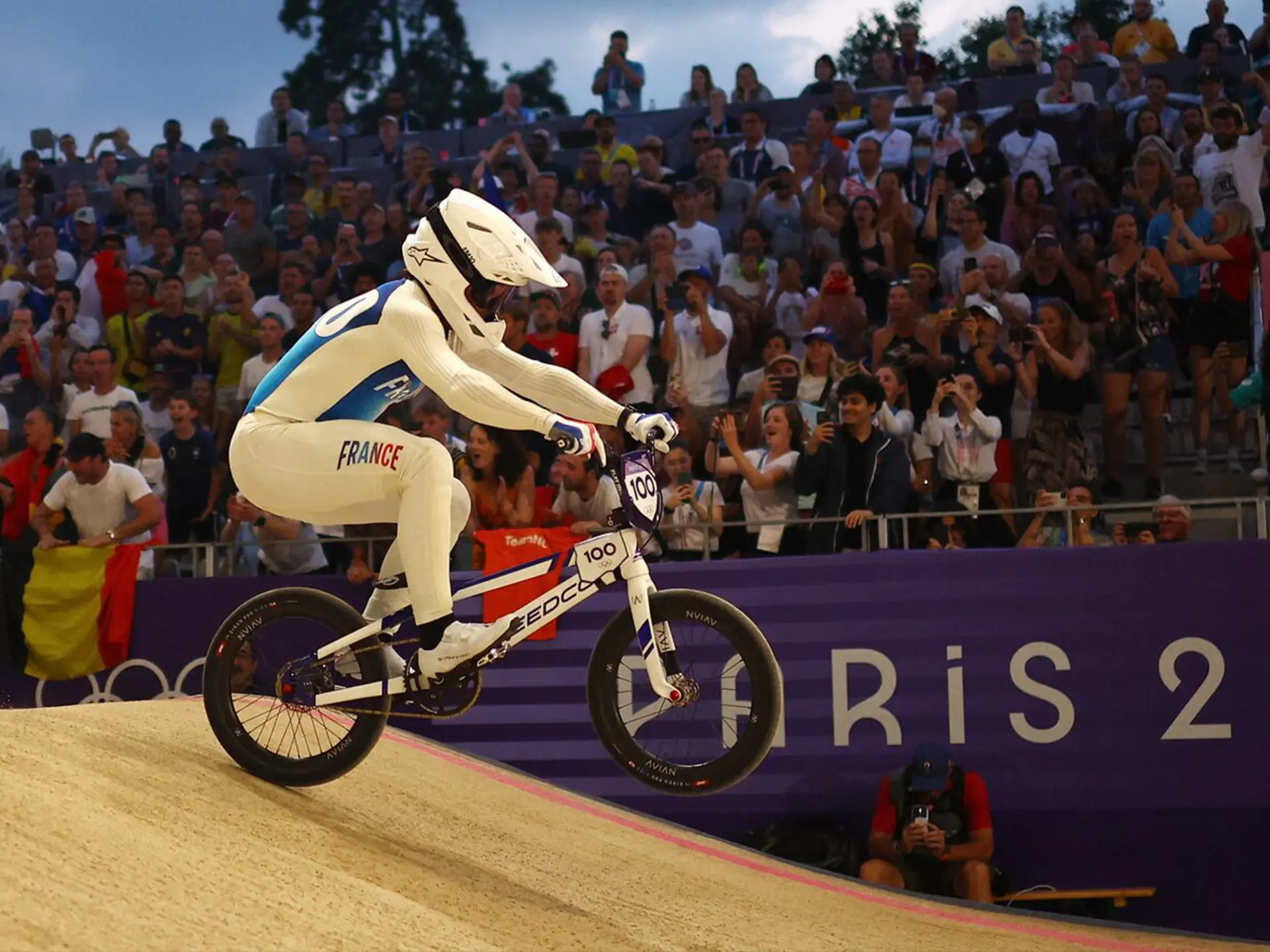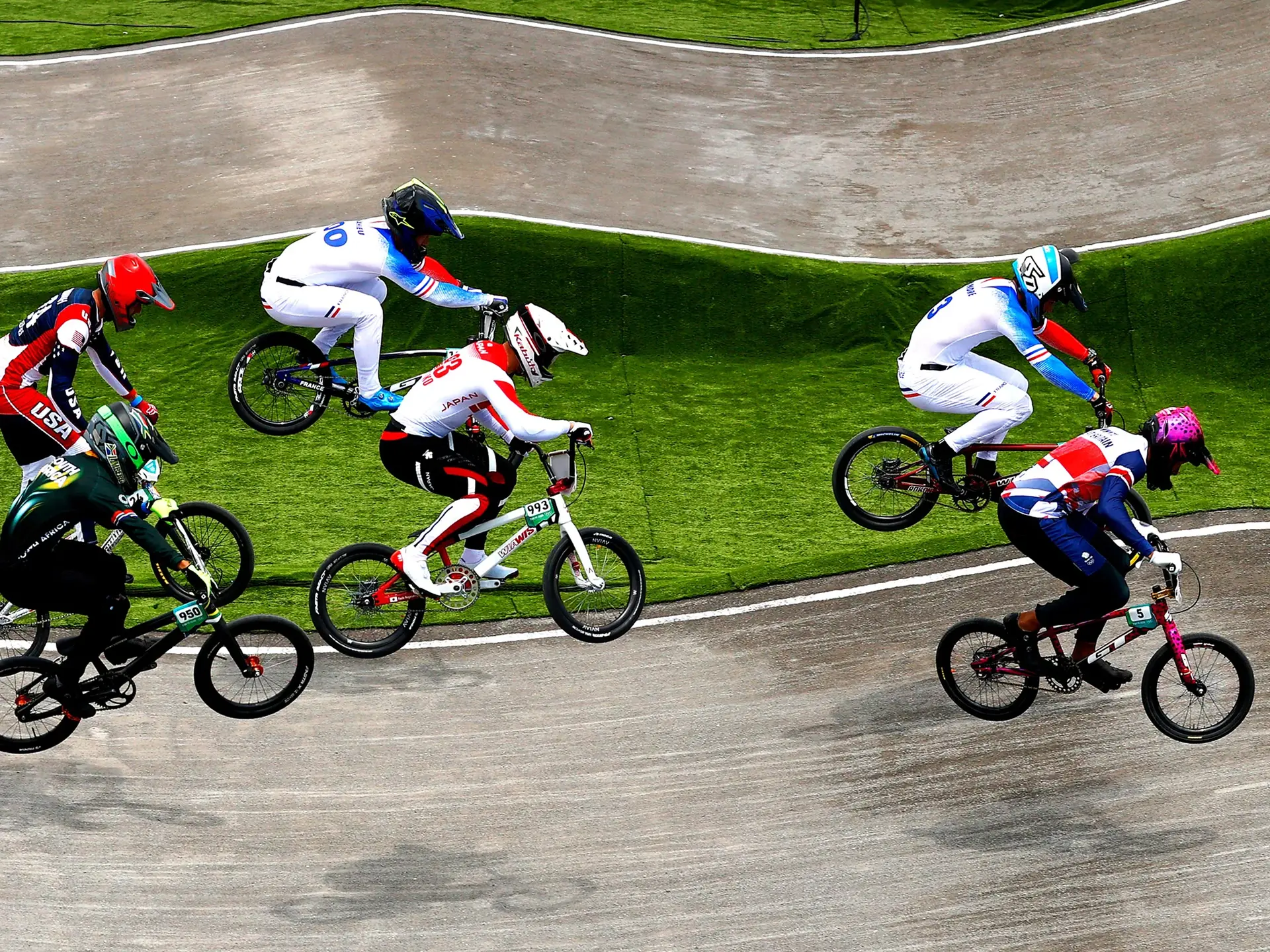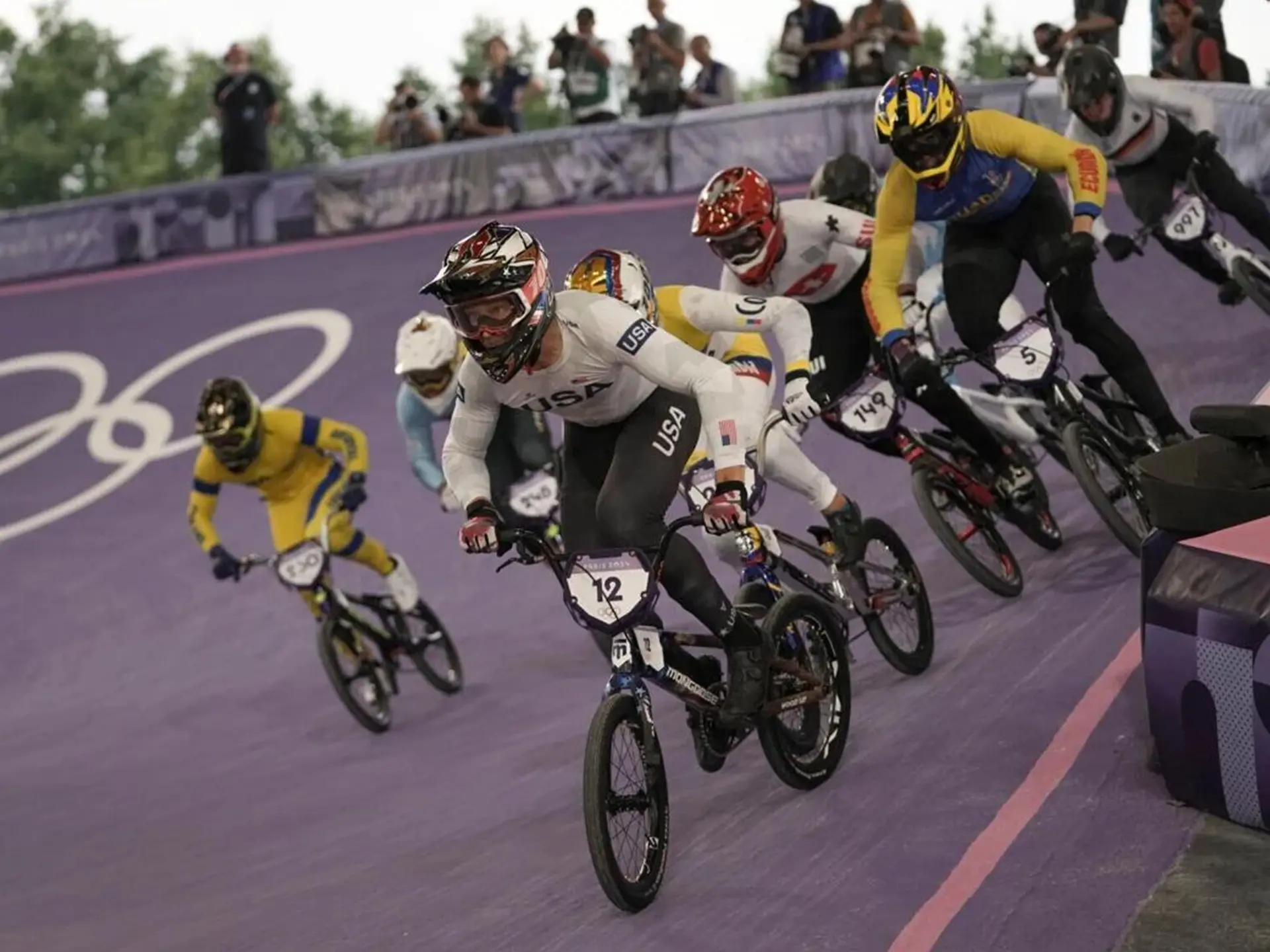Relationship between the Pump Track and BMX Cross
BMX cross tracks, which are also seen at the Olympic Games, are often long, fast, technical tracks that feature a variety of terrain, jumps, turns and obstacles. Competitors combine speed and skill to battle their rivals for the top step of the podium.
Pump tracks are a smaller, simplified version of BMX cross tracks, where users use different terrain elements, waves, jumps and climbs to “pump” their movement.
Pumping is a fundamental technical element of the sport, allowing riders to ‘pump’ themselves up, i.e. gain speed, by taking advantage of the undulations of the track, rather than pedalling during their movement, without the need for constant pedalling.
This pumping motion also plays a key role in BMX cross races, where riders are able to make optimal use of the elements on the track, allowing them to go faster without wasting energy.
The pumping track therefore serves as a kind of mini training track where riders can master and develop this technical base, which is also essential for Olympic BMX cross races.
Because of their simplicity and small size, pump tracks are an ideal place for beginners and advanced BMX riders to practice movements and dynamics in a safe environment, which they can later apply at high speeds and on more complex tracks. Many Olympians and coaches also stress that training on pump tracks helps technical development and is essential for riders to be able to effectively tackle the complex challenges of BMX cross tracks later on.



